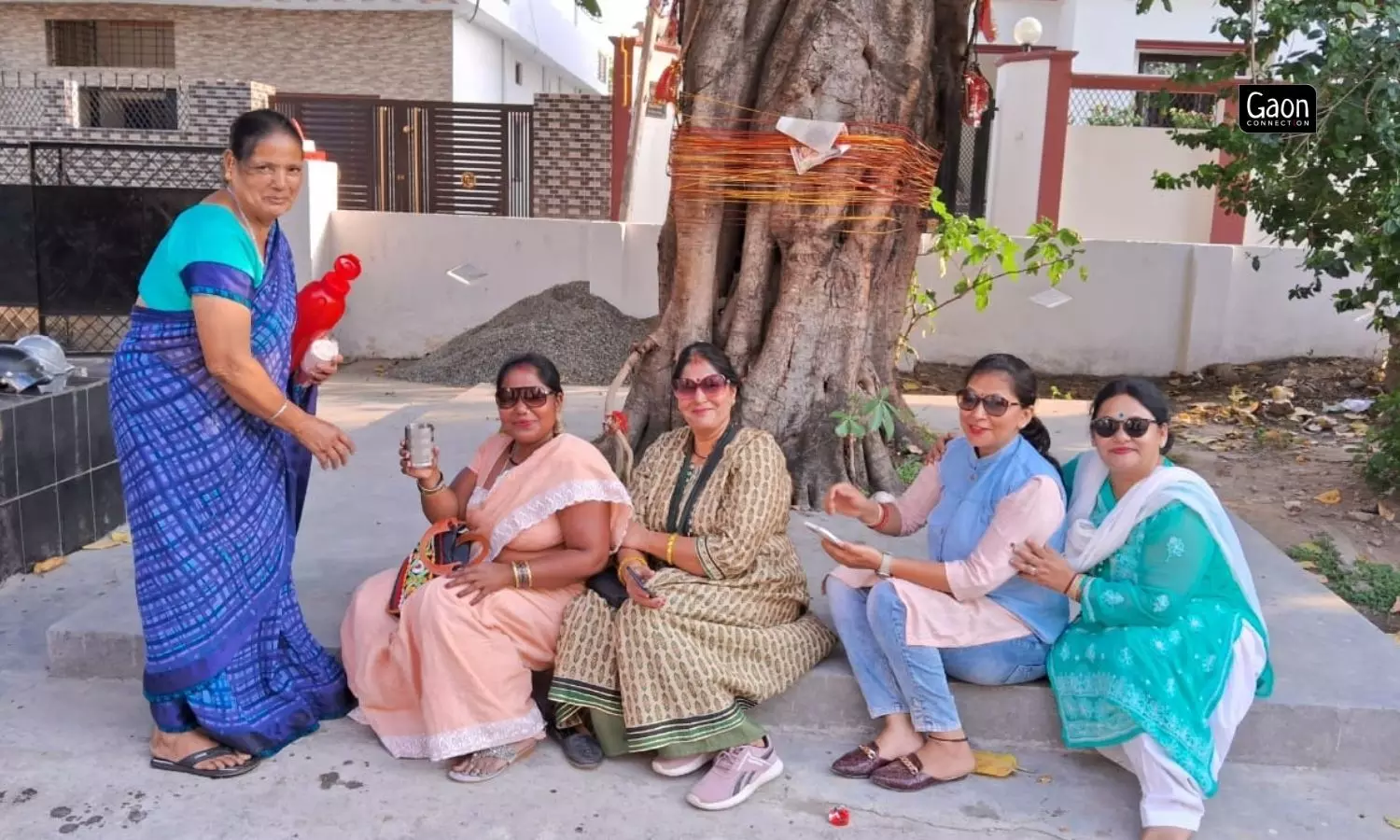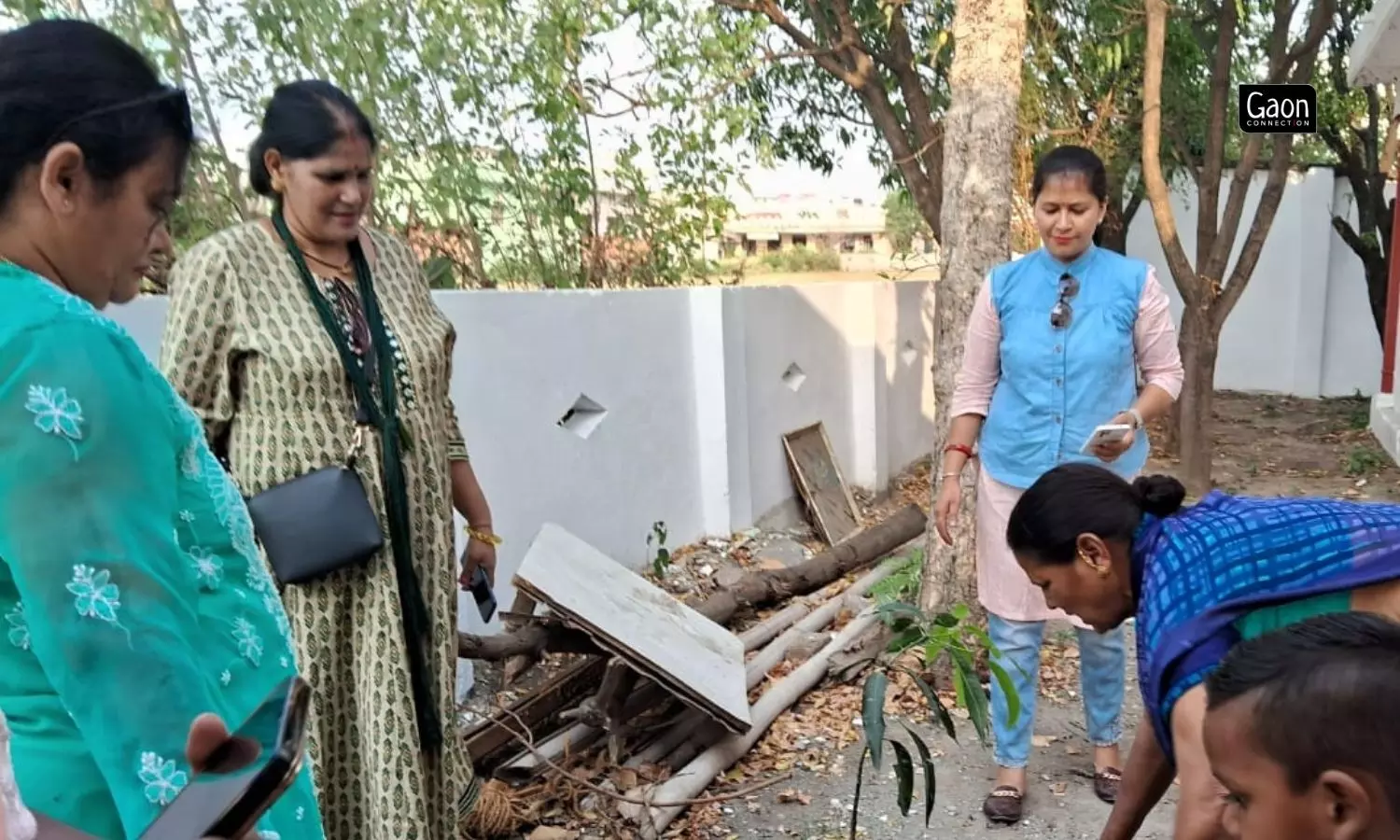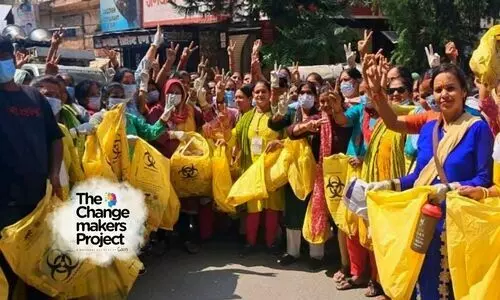For a year now, a sanitation movement has been underway in Haldwani, where hundreds of women are involved in keeping the gateway to the beautiful hills of Kumaon in Uttarakhand clean and green.
About 500 women, who are part of the Baini Sena, a sisterhood of women, have co-opted to ensure cleanliness in Haldwani and are working closely with the hill town’s municipal corporation. These women are part of various self-help groups in Haldwani.
Between 8 am and noon, the bainis (sisters) do the rounds of the wards in the hill town and in case they find areas where the garbage is dumped and no vehicle has come to clear it, they contact the garbage collector truck driver or the corporation office and alert them.

Ten women from each of the 57 self-help groups undertook the responsibility and the first phase of the clean up that started in November 2022.
“We have the responsibility of keeping Haldwani clean, we also alert people about the importance of keeping their surroundings clean to prevent dengue. Being part of the baini sena has given us a source of income too,” Neema Bisht, a 44-year-old member of Baini Sena, told Gaon Connection.
It was last year, on November 21, that a movement to clean up Haldwani, about 270 kilometres from the state capital Dehradun, was set into motion. The move was made by the Haldwani Municipal Corporation, along with 57 self help groups (SHGs), for 57 of its 60 administrative wards. And, that is how the Baini Sena, a sisterhood of women, was born.
“Ten women from each of the 57 self-help groups undertook the responsibility, and the first phase of the clean up that started in November 2022, concluded in May 2023,” IP Pant, city manager, Haldwani Municipal Corporation, told Gaon Connection.
The sanitation drive is now in its second phase in Haldwani.
Also Read: Gaon Connection Launches ‘The Changemakers Project’ to Build a National Registry of Changemakers
Before the initiative kicked off in November 2022, there was a workshop organised for the bainis to brief them on what they were expected to do, explained Pant.
“Their first job was to survey their respective wards and record how many family members were there in each household. They had to write down the details of their names and the ward number for the records. They had to find out if the garbage van came to their locality to pick up the trash and ensure that waste segregation was carried out diligently by each household,” the municipal official said.
The chores are divided amongst the bainis. “Some of us are given the job of noting down the names, ward numbers and addresses of the families we surveyed. The others speak to the families, explain to them about the correct way of segregation of waste, and keep in contact with the driver of the garbage van,” Neema Bisht, a 44-year-old baini, told Gaon Connection.
“We have the responsibility of keeping Haldwani clean, we also alert people about the importance of keeping their surroundings clean to prevent dengue. Being part of the baini sena has given us a source of income too,” she added.

The chores are divided amongst the bainis. We have the responsibility of keeping Haldwani clean, said Bisht.
A major task assigned to the bainis is the collection of ‘user’ charges. Each household of four to five members has to pay a monthly fee of Rs 60 to have their garbage handled and cleared. The charges for commercial households and institutions such as schools, colleges and hospitals, are different.
Each ward has at least 50,000 homes and the monthly income from the user charges from all the wards put together is about Rs 30 lakh if not more. Of the money collected, 25 per cent is shared amongst the bainis. The rest of the money is distributed amongst the waste handlers, the drivers and kept to get cleaning materials and so on.
Also Read: At This School, Based on Gandhi’s dream of Nai Taleem, Children Earn While They Learn
“The government does not take a pie from the money collected and this has made the system more efficient as people now hold it accountable. Since the bainis and the others involved in the clean up team stand to benefit from the collection, everything has started to work smoothly,” said Pant.
But the municipal corporation works closely with the Baini Sena. There are 13 nodal officers who monitor the baini sena, each of whom looks after four to five wards. A report of the day’s activities is duly submitted to the Municipal Commissioner, Pankaj Upadhyay as well as the Mayor, Jogendra Pal Rautela. Hardeep Puri, the urban development minister honoured the members of the baini sena in February this year.
Another positive spin off for the women of the SHGs is that as they go house to house talking to the family members, they are also able to tell them about the other work their groups do.
“We make pickles and papads, do embroidery work, tailoring and make diyas and sweets. During festivals, the government sets up stalls in fairs and we showcase what we make in the SHGs. When we visit people as members of the baini sena, they order some of the things from us, and that is also an earning,” 55-year-old Prabha Khanka, who is part of one of the SHGs and also a baini, told Gaon Connection.




















